Peugeot e-Expert Review 2025
Peugeot e-Expert At A Glance
Peugeot’s previous e-Partner was one of the best electric vans on the market, as the smallest of three plug-in models in the company’s LCV portfolio. Now with a bigger battery, improved range and some styling tweaks, along with some cabin improvements, it’s better than ever – but does it suit your needs? Read our Peugeot e-Partner review to find out…
Sharing its bodywork, electric motor and battery technology with the Vauxhall Combo Electric, Citroen e-Berlingo and Fiat e-Doblo, the latest model benefits from a 20% increase in range over the previous model - up from 171 miles to 205 miles (WLTP mixed cycle).
A proportion of that increase is down to a new regenerative braking system, which can be activated at three different regeneration levels using steering wheel-mounted buttons, while the 52kWh battery pack offers further capacity than the old model did.
The latest Peugeot e-Partner is also offered with CCS rapid charging at a maximum speed of 100kW - twice that of its predecessor, allowing a 0-80% charge in around 30 minutes on a 100kW charger. The onboard charger, meanwhile, is a 7kW unit compatible with most home sockets, while a three-phase compatible 11kW charger is offered an option. Another extremely useful feature is the Peugeot e-Partner’s EPTO, or Electric Power Take Off, which allows the drive battery to be used to power tools or equipment from a socket in the van.
There are two body lengths available in the UK market – L1 and L2, the latter of which is also offered as a crew cab with flat-folding seats and a pop-up bulkhead to increase load spacec when they’re not in use.
It’s a tidy and neatly styled van with a choice of body lengths known as L1 and L2 (4.4 or 4.7 metres).
Two trim levels are offered – the business-like Professional and the more driver-focused Asphalt, which gets improved interior trim and body-coloured bumpers.
All models are offered with the option of Peugeot’s ‘Multi-flex’ modular folding three-seater front bench, which allows greater storage capacity inside the cabin, using storage space under the centre seat cushion and a load through bulkhead.
Styling changes include an all-new front end that’s more distinctively different from its sister models, with a Peugeot ‘shield’ logo at its centre. The headlights feature a three-claw design echoing the Peugeot ‘Lion’ emblem, with LED lamps on the higher Asphalt model.
All versions now come with a smartphone station with DAB radio, Bluetooth and two USB connections, with inductive charging. The Asphalt also get Peugeot’s full digital “i-Cockpit”, a standout from its sister vans.
Safety equipment includes driver attention alert, advanced emergency braking with pedestrian and cyclist detection, cruise control and rear parking sensors, while the Asphalt gets Stellantis Group’s new Dynamic Surround View, which projects images from two cameras to a rear-view mirror.
Power comes from a 136PS electric motor with 270Nm of torque, and offers a lively driving experience. Peugeot also claims that the payload of 780kg and towable weight of 750kg are benchmarks in the segment, but they’re still quite a way behind diesel versions of the Peugeot Partner.
Driving the Peugeot e-Expert
Both trim levels of the e-Expert are comfortable and spacious, with three front seats, the passenger side being designed to fold down to create a work surface or writing table on the Asphalt model – a neat feature that will be appreciated by many tradespeople and also comes with a hidden storage locker beneath the seat, ideal for concealing power tools or computer equipment.
In the latest model, the cabin has been extensively revised with higher quality materials and a new oval steering wheel, which gives more space for getting in and out of the cabin and will be appreciated by taller and larger drivers.
It’s spacious and comfortable upfront with good forward visibility, but rear vision isn’t the best – the mirrors aren’t as panoramic as they could be. On the Asphalt model this is addressed somewhat by Stellantis’s new Dynamic Surround View, which uses rear facing cameras in the side mirrors and on the back of the van to project a rearward view to the rear-view mirror. It does, however, give the impression of objects being closer than they are – it’s easier to rely on the mirrors and parking sensors to complete reverse parking manoeuvres, for example
There are three drive modes, selectable via a switch next to the gear lever. To benefit from the maximum range you’ll need to drive in ‘Eco’ mode. In ‘Normal’ mode, the battery range will drop by about 10 per cent, but the van is notably more eager. ‘Power’ will reduce that range further but is useful for overtaking and joining fast roads via slip roads.
All models have adaptive variable damping, which make it settled on rough and broken surfaces, while the steering is well-weighted and the handling excellent for a commercial vehicle, the refinement aided by the quietness of the electric motor.
Charge it overnight and it will take around 10 hours for the battery to replenish. Fast charging is available, though, and uses an optional 11kW on-board charger, which drops the charging time to under seven hours. 100kW DC rapid charging from roadside fast chargers can get you an 80% charge in around 45 minutes, but will cost a lot more.
Overall, the Peugeot e-Expert is an impressive van to drive. It’s usable, functional and very much a viable proposition as electric vans continue to evolve and improve.
As electric vans go, it’s hard to beat.
Peugeot e-Expert interior
The payload of the Peugeot e-Expert isn’t as good as that of the diesel Peugeot Expert, but is still rated to carry 1,000kg – one of the best in its class for electric vans.
The one-tonne payload will be enough for most electric van users, who would see the range significantly reduced by heavier loads, anyway. The load bay is spacious and flat as the battery lives under the floor, and there’s very little wheelarch intrusion. Only one roof height is available giving an access height of 1.4 metres and 1.6 metres of width.
There are twin side doors as standard and on the Asphalt model these can be configured as fully electric via the options list, which is helpful for loading and unloading in tight spaces.

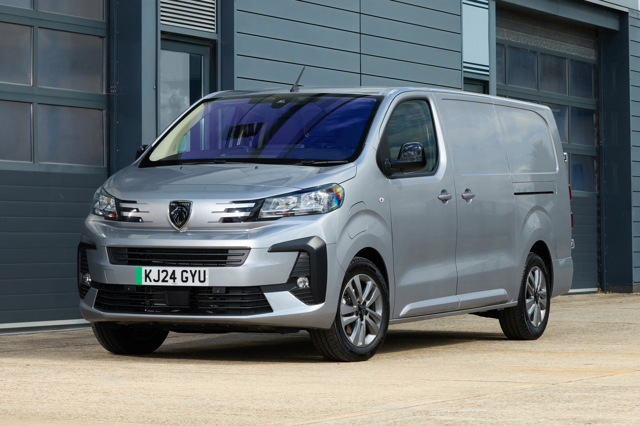
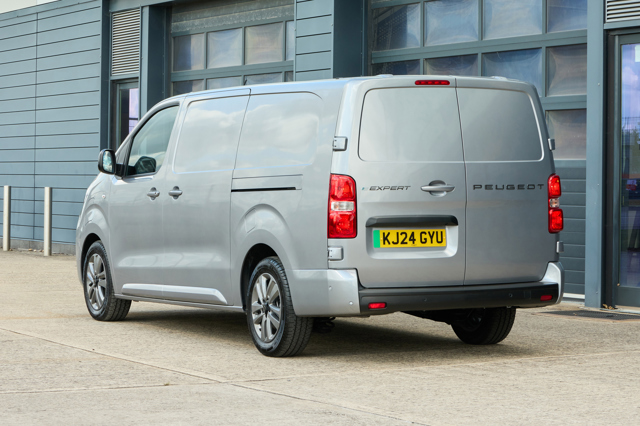
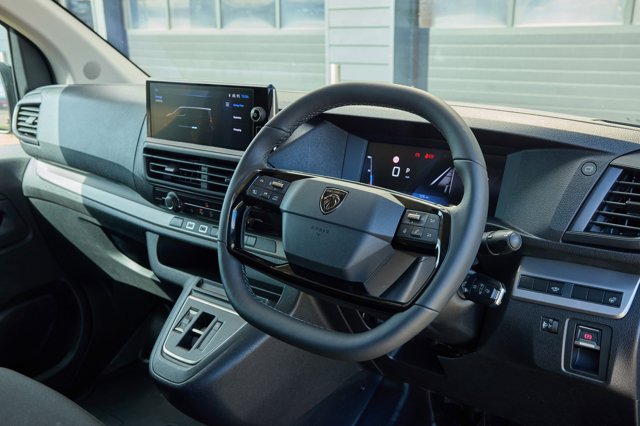
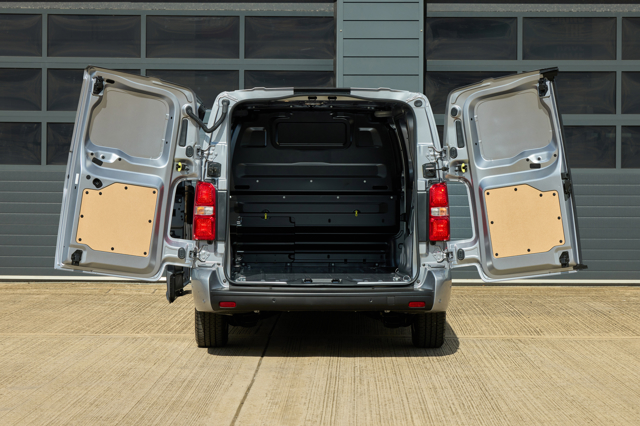
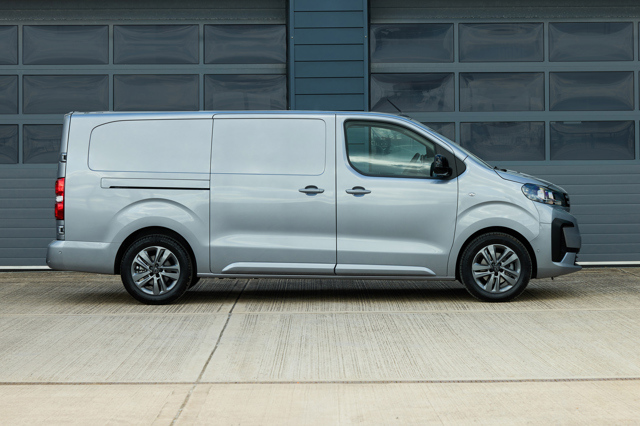
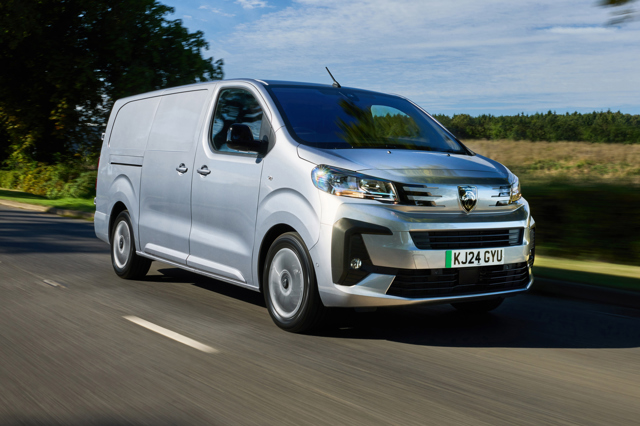
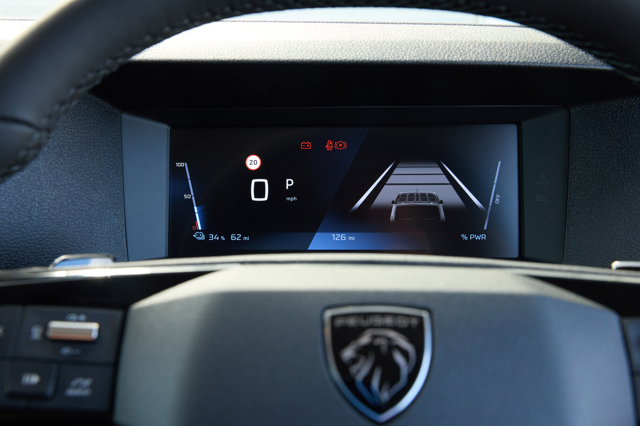
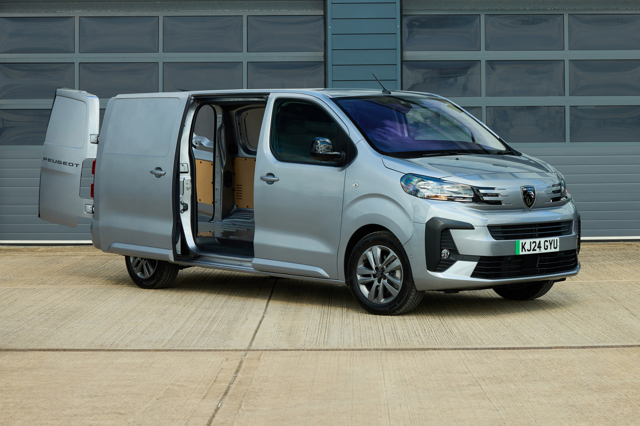
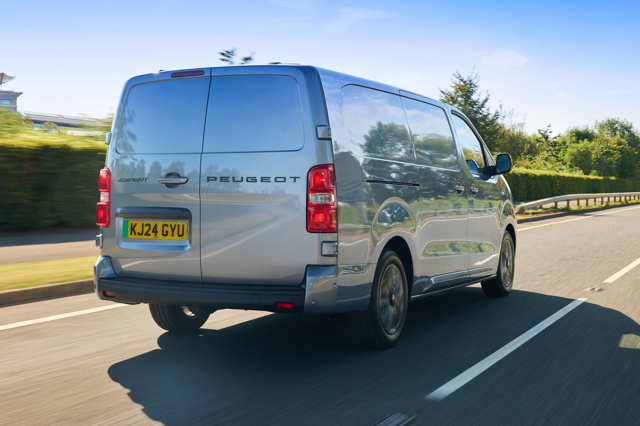
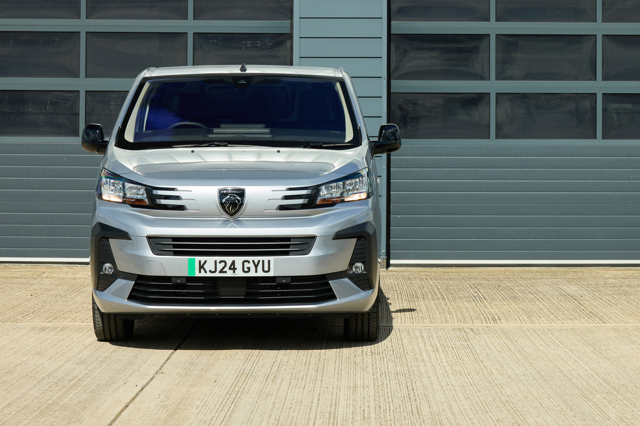
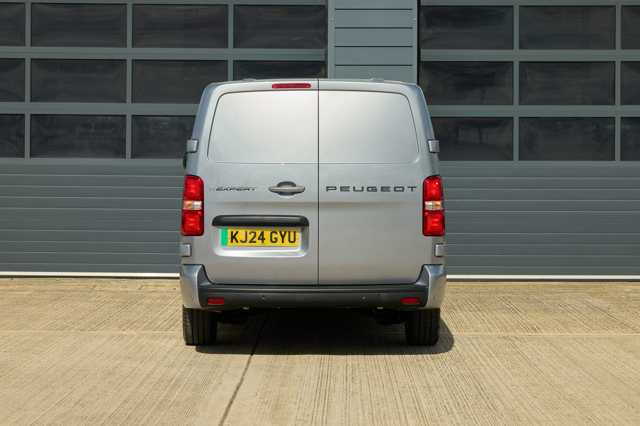
:no_upscale():format(webp)/https://cdn.uk.prod.group-mobility-trader.com/images/cas/51bd8dbb05bbf355fe538da7f587ad10/e1a19da6a8a1110a67cef0e8fc33ec36.jpg)

 Improved electric range, fast charge option, good value
Improved electric range, fast charge option, good value
 Limited body styles, rear visibility, less payload than diesels
Limited body styles, rear visibility, less payload than diesels
:no_upscale():format(webp)/https://cdn.uk.prod.group-mobility-trader.com/images/cas/15eaba9f678eaaaf09359b91b6270890/c8fc7c11f495088b8d3f313a7bf990f0.jpg)
:no_upscale():format(webp)/https://cdn.uk.prod.group-mobility-trader.com/images/cas/c2fbb4723ad1aed8132ee71fcd79ce45/a8b19e3cd7d19916f1b8e05e6d2bca92.jpg)
:no_upscale():format(webp)/https://cdn.uk.prod.group-mobility-trader.com/images/cas/e1e8faddcb850bffa24e3462172d23dd/afa03d3e3664d6f03169b072ae4a8db1.jpg)